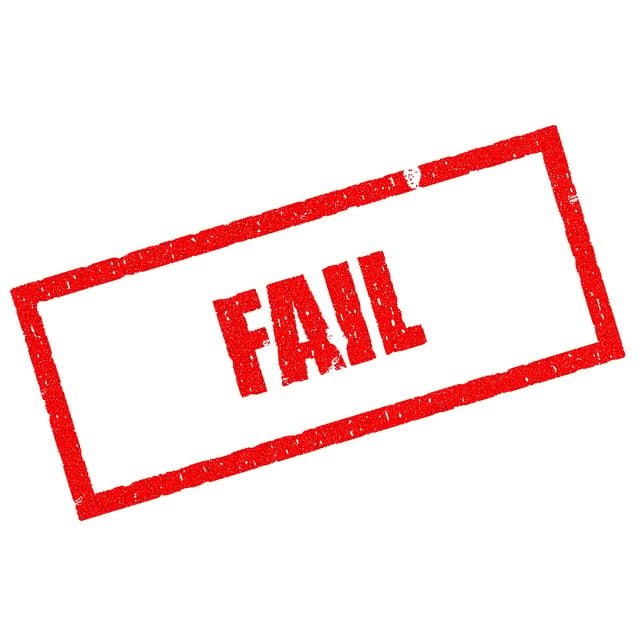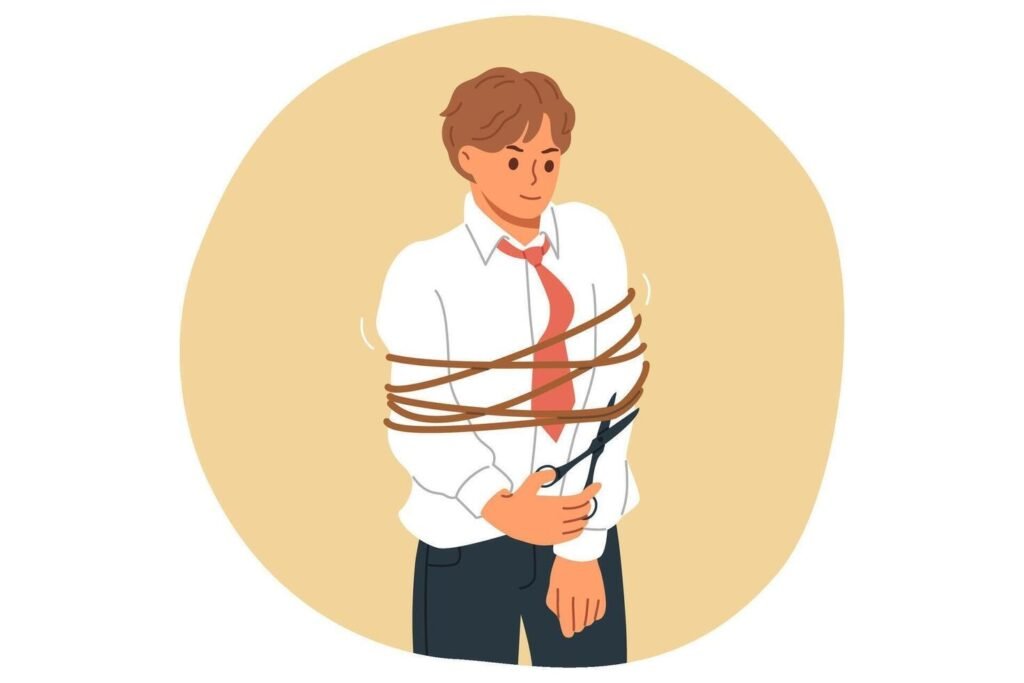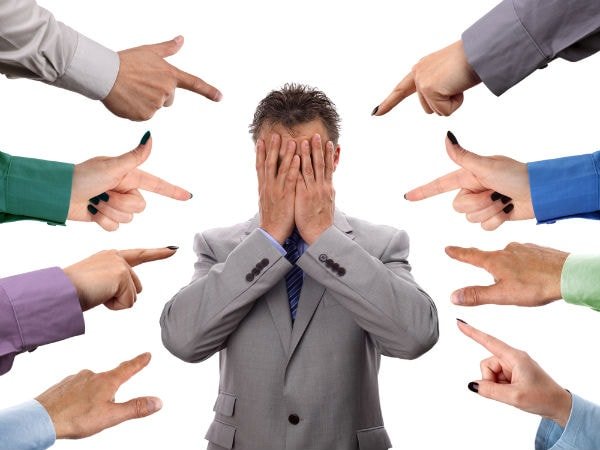Imagine stepping into the shoes of a leader, where your role is not just to hold a title but to guide, inspire, and create a thriving environment. Ensuring that your team members are intellectually challenged is crucial for their growth and motivation. Yet, many leaders find themselves stumbling, facing challenges that lead to failure. Why do leaders fail? It’s not always about the lack of skills or knowledge. Often, it’s about the inability to connect with their team, misaligned goals, or ignoring the needs of their employees.
In this article, we’ll explore the common pitfalls that many leaders face and how understanding these mistakes can transform you into a competent leader. Whether you’re new to a leadership position or have been leading for years, learning from these examples will empower you to grow and succeed. At the heart of effective leadership is not just achieving business goals but realizing that your team is made up of people, not just workers. This approach fosters productive communication and content employees, ultimately leading to success.

Leadership Failure is What?
Leadership failure is a widespread issue that can have severe consequences for organizations, teams, and individuals. Understanding the definition and prevalence of leadership failure to develop effective prevention strategies is essential. Leadership failure refers to the inability of a leader to achieve their goals, build and maintain a high-performing team, and create a positive work environment.
According to various studies, an estimated 50% of leaders fail, resulting in significant financial and reputational risks for organisations. The costs of leadership failure can add up to three times an executive’s salary in some cases, making it a critical issue that requires attention.
It’s crucial to recognize the intricate nature of leadership roles and the numerous challenges they encounter. Every leader embarks on a distinct journey, navigating both external and internal factors that can significantly influence their success or failure. Understanding these complexities sets the stage for exploring the various reasons behind leadership failures. SO, WHY DO LEADER FAIL?

1. They Treat People Like Tools
Some people think being a leader is just about giving orders or having power. The financial cost of leadership failure can be substantial, including lost trust, employee turnover, and the financial burden of replacing ineffective executives. They forget that both most leaders and their team members are humans, not machines. Leadership is not just about hitting targets but also about building trust and respect.
Why Some Leaders Struggle?
Leaders fail when they treat their team as mere tools to accomplish tasks. Too many leaders care more about numbers than they do about people. For example, when a leader focuses solely on deadlines and neglects the feelings and well-being of their team, they often fail to respond effectively to team issues, resulting in stress and burnout.
What Leaders Can Do?
Talk to your team, listen to their concerns, and appreciate their hard work. Leaders should be constantly working on their skills and self-improvement. When leaders start making people feel valued, they tend to work better. Great leaders balance getting things done with making sure their team is happy and motivated. Leadership skills like fostering relationships founded on trust help create efficient leadership.

2. They Don’t Help People Grow
Some leaders are too busy putting out fires to focus on helping their team get better. But smart leaders know that when their organization or team improves, everyone wins.
Why This Happens?
Many leaders fail and forget to invest in their employees’ growth. They focus on short-term success and ignore long-term development. This is one of the main reasons why leaders fail.
What Leaders Can Do?
Spend time helping your team build new skills. Give them feedback that helps them grow, not just constructive criticism. Offer training or resources to help them get better at their jobs. When your team improves, your leadership development report and results improve too. Leadership development reports often show how a competent leader’s investment in their team leads to better performance.

3. They Force Their Own Way on Everyone
Some leaders think their way is the only way. They forget that everyone is different, and what works for one person might not work for another. Good leadership means being flexible and open to new ideas.
Why This Happens?
Leaders fail when they expect everyone to do things their way. This kills creativity and makes people feel like their ideas don’t matter. For example, if a leader ignores a team member’s idea just because it’s new, they miss out on opportunities to improve. Many leaders fall into this trap, leading to misconceived goals and poor decisions. In contrast, great leaders demonstrate flexibility and adapt their goals, avoiding the pitfalls of rigid adherence to original objectives.
What Leaders Can Do?
Encourage your team to share their ideas, even if they’re different from yours. Help people find their own way to succeed. Be open to change and let your team try new approaches. When people feel trusted, they’ll do their best work. This helps organizations foster sound decisions and creativity.

4. They Wait for People to Come to Them
Some leaders think no news is good news. They stay in their office and assume everything’s fine. But when leaders don’t reach out, problems pile up.
What Causes This Issue Leadership Failures?
Leaders fail when they’re too disconnected from their team. Employees might feel ignored or afraid to speak up. This leads to misunderstandings and unspoken frustrations. Poor communication skills and a lack of concise communication are common leadership flaws.
What Leaders Can Do?
Some leaders stay in their offices and wait for employees to come to them. This approach creates a disconnect between the leader and the team. It leads to poor leadership failure, communication skills and missed opportunities.

5. They Dodge Responsibility
Some leaders point fingers when things go wrong instead of owning up to their own leadership failure, and mistakes. This makes them look weak and untrustworthy.
Why Some Leaders Struggle With This?
When things go wrong, some leaders blame failure on others instead of taking responsibility. This is one of the biggest reasons for leadership failure.
Leaders fail when they refuse to take responsibility for bad decisions. This creates a toxic culture where no one feels safe to make mistakes or take risks. It’s like trying to drive a car without brakes — eventually, you crash. Executives fail because they don’t accept responsibility for their team’s performance.
What Leaders Can Do?
Own your mistakes and show your other successful leaders and team how to learn from them. When you take responsibility for leadership failure, you set an example for others. A strong leader creates a safe space for growth and improvement, even when things go wrong. Leadership mistakes are inevitable, but how you handle them matters.

6. They Have Poor Communication
Clear communication is crucial in a leadership position. When leaders fail to explain things clearly, it leads to confusion and frustration among team members. It’s like trying to play a game without knowing the rules.
Why this happens?
Poor leadership qualities often involve communication failures, such as not giving clear instructions, setting wrong expectations, or providing inadequate feedback or updates. This leads to missed deadlines, mistakes, and a lot of unnecessary stress for everyone. Bad leadership qualities often include ineffective leadership traits like poor decision-making and unclear expectations.
What Leaders Can Do?
Keep things clear and . Make sure everyone understands what’s expected of them. Listen to your team and give feedback that helps them improve. Good communication builds trust and keeps everyone on the same page. Effective leaders use concise communication to achieve business goals.

7. They Struggle to Handle Challenges
Leadership challenges often separate great and good leaders, from ineffective ones. When leaders struggle to adapt to unexpected situations, they lose the trust and respect of their team.
Why Leadership Can Falter Here?
Some leaders crumble under pressure, make hasty decisions, or avoid addressing problems altogether. Poor decision-making and a lack of flexibility lead to failure in leadership roles.
What Leaders Can Do?
Good leaders accept challenges as opportunities to grow. They analyze situations, seek input from external factors, and make sound decisions that benefit their team and organization. Showing resilience in tough times inspires confidence in employees.
Causes of Leadership Failure
Leadership failure can be attributed to various factors, including external and internal factors. Understanding these causes is crucial to developing effective prevention strategies.
External factors that can contribute to leadership failure include:
1. Economic Decline: A decline in the economy can lead to reduced resources, increased competition, and decreased morale, making it challenging for leaders to succeed.
2. Changes in the Work Environment: Changes in the work environment, such as restructuring or downsizing, can create uncertainty and make it difficult for leaders to adapt.
3. Organizational Culture: A toxic or unsupportive organizational culture can hinder a leader’s ability to build trust and create a positive work environment.
Internal factors that can contribute to leadership failure include:
1. Poor Communication: Poor communication can lead to misguided and misconceived goals, causing teams to work towards the wrong objectives.
2. Lack of Confidence: Leaders who lack confidence may struggle to make decisions, leading to indecision and inaction.
3. Inability to Adapt: Leaders who are unable to adapt to changing circumstances may become stuck in their ways, leading to stagnation and failure.
4. Misguided Priorities: Leaders who prioritize the wrong goals or objectives may lead their teams down a path of failure.
4. Ineffective Leadership Style: Leaders who use an ineffective leadership style, such as autocratic or laissez-faire, may struggle to build trust and create a positive work environment.
By understanding the causes of leadership failure, organizations can develop effective prevention strategies to support their leaders and create a positive work environment.

Advice: Leadership Is a Journey, Not a Title!
Being a leader means more than holding a leadership position alone. It’s about building relationships, supporting your employees, and creating an environment where everyone can succeed. Leadership failure happens when leaders focus too much on power and too little on people.
By addressing leadership flaws and improving leadership qualities, you can avoid the common reasons why leaders fail. Good leaders know that their success depends on their team’s performance and their leadership qualities and their ability to inspire others.
Remember, great leadership is not about avoiding mistakes—it’s about learning from them. Whether you’re a new leader or have years of experience, focusing on your people will always lead your organization to better results.
With these strategies, you can overcome leadership challenges, improve your own leadership skills and role, and help your team reach their full potential. Successful leaders don’t just lead; they create success for everyone around them.






